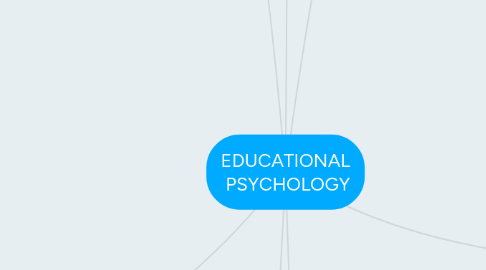
1. 3.1 INTELLIGENCE
1.1. CONCEPT
1.1.1. Capability to understand relationship and patterns
1.1.2. Habilities to skillfully perform diverse activities
1.1.3. Capability to adapt
1.2. INTELLIGENCE TESTS
1.2.1. Group test
1.2.2. Individual test
1.2.2.1. The Binet Test
1.2.2.2. The Wechsler Scales
1.3. THEORIES
1.3.1. Sternberg's Triarchic Theories
1.3.1.1. 3 forms of intelligence
1.3.1.1.1. Analytical Intelligence
1.3.1.1.2. Creative Intelligence
1.3.1.1.3. Practical Intelligence
1.3.2. Gardner’s Eight Frames of Mind
1.3.2.1. Verbal skills
1.3.2.2. Mathematical skills
1.3.2.3. Spatial skills
1.3.2.4. Bodily-kinesthetic skills
1.3.2.5. Musical skills
1.3.2.6. Intrapersonal skills
1.3.2.7. Interpersonal skills
1.3.2.8. Naturalist skills
1.3.3. Emotional Intelligence
1.3.3.1. Emotional Intelligence
1.4. is distributed across brain regions
1.4.1. Parietal lobe
1.4.2. Temporal and occipital lobes
1.4.3. Cerebellum
1.5. CONTROVERSIES AND ISSUES
1.5.1. Nature-nurture issue
1.5.2. Ethnicity and Culture
1.5.3. Ability Grouping and Tracking
2. 2. LEARNING
2.1. CONCEPT
2.1.1. "Learning is a relatively permanent change in capacity for performance, acquired through experience" according to Good and Brophy
2.2. NON-CIENTIFICS THEORIES
2.2.1. As a formal discipline
2.2.2. As natural development
2.2.3. As perception
2.3. CIENTIFICS THEORIES
2.3.1. Conductism
2.3.1.1. Classical conditioning
2.3.1.1.1. Concepts
2.3.1.2. Operant conditioning
2.3.1.2.1. Positive reinforcement
2.3.1.2.2. Negative reinforcement
2.3.1.2.3. Positive punishment
2.3.1.2.4. Negative punishment
2.3.1.2.5. Application to teaching
2.3.2. Behaviourism
2.3.2.1. Behaviour modification
2.3.2.1.1. Create a new behaviour
2.3.2.1.2. Reinforce a behaviour
2.3.2.1.3. Supress a behaviour
2.3.3. Piaget
2.3.3.1. Equilibration
2.3.3.1.1. Assimilation
2.3.3.1.2. Accommodation
2.3.4. Vigotsky
2.3.4.1. Cognitive development as a result of interaction
2.3.5. Bruner
2.3.5.1. Learning by discovering
2.3.6. Ausubel
2.3.6.1. Meaningful receptive learning
3. 1. INTRODUCTION TO EDUCATIONAL PSYCHOLOGY
3.1. Historical development as a scientific discipline
3.2. Educational Psychology is
3.2.1. Branch of psychology
3.2.2. Independent discipline
3.2.3. Intermediate position
3.3. The scientific knowledge
3.3.1. Systematic
3.3.2. Organized
3.3.3. Objective
4. 3.2 EMOTIONAL INTELLIGENCE
4.1. FUNCTIONS OF EMOTIONS
4.1.1. Adaptative
4.1.2. Social
4.2. SALOVE AND MAYER MODEL
4.2.1. Strategic Area
4.2.1.1. Managing emotions
4.2.1.2. Understanding emotions
4.2.2. Empiric Area
4.2.2.1. Using emotions to facilitate thought
4.2.2.2. Identifying emotions
4.3. BAR-ON MODEL
4.3.1. Interpersonal intelligence
4.3.2. Intrapersonal intelligence
4.3.3. Adaptability
4.3.4. General mood
4.3.5. Stress management
4.4. HOW TO WORK IT
4.4.1. SICLE Program
5. 3.3 CREATIVITY
5.1. DEFINITION
5.1.1. Something that is "Novel and valuable"
5.2. GUILFORD "STRUCTURE OF INTELLECT"
5.2.1. Operation (Cognition)
5.2.2. Content (Symbolic)
5.2.3. Product (Class)
5.3. BULLYING LOW AND SELLING HIGH (STENBERG)
5.3.1. Intelligence
5.3.2. Intellectual styles
5.3.3. Knowledge
5.3.4. Context (environment)
5.3.5. Personality
5.3.6. Motivation
5.4. may refer to
5.4.1. The creative process
5.4.1.1. Occupation with the subject
5.4.1.2. Incubation phase
5.4.1.3. Insight or aha-experience
5.4.1.4. Evaluation
5.4.1.5. Elaboration
5.4.2. The creative person
5.4.2.1. Torrance test of creative thinking
5.4.2.1.1. Fluidity
5.4.2.1.2. Flexibility
5.4.2.1.3. Originality
5.4.2.1.4. Elaboration
5.4.3. The creative product
5.4.4. The creative context
5.5. HOW TO FOSTER CREATIVITY
5.5.1. Brainstorming
5.5.2. Role-playing
5.5.3. Creative analogies
5.5.4. Ideas modification
5.5.5. What would happen if...?
6. 4. LEARNING STRATEGIES
6.1. DEFINITION
6.1.1. "Behaviors and thoughts that a learner uses during learning" according to Winstein and Mayer
6.2. TYPES
6.2.1. Cognitive/Processing
6.2.1.1. Selection
6.2.1.1.1. Important information
6.2.1.2. Repetition
6.2.1.2.1. Remember material
6.2.1.3. Organization
6.2.1.3.1. Separate the information
6.2.1.3.2. Establish relationship
6.2.1.4. Elaboration
6.2.1.4.1. Previous knowledge
6.2.2. Support
6.2.2.1. Intrinsic Motivation
6.2.2.2. Attitudes
6.2.2.3. Affect
6.2.3. Metacognitive
6.2.3.1. Thinking about thinking
6.3. ASSESSMENT
6.3.1. Observing
6.3.1.1. Depend on the age and the type of the task
6.3.2. Interview
6.3.2.1. What strategies a student used
6.3.3. Self-reports
6.3.3.1. Reflection
6.3.4. Inventories
6.3.4.1. Formula for rapid diagnosis
7. 5. MOTIVATION
7.1. CONCEPT
7.1.1. "What activates and guides our behaviour" according to Woolfolk and McCune
7.2. TYPES
7.2.1. Intrinsic
7.2.2. Extrinsic
7.3. THEORIES
7.3.1. Behaviourism
7.3.2. Humanism
7.3.2.1. Maslow's theory of needs
7.3.2.2. Self determination
7.3.3. Cognitive approach
7.3.3.1. Goals
7.3.3.1.1. Types
7.3.3.2. Attributions (Weiner)
7.3.4. Social-cognitive approach
7.3.4.1. Theory of Expectancy X value
7.3.5. Social-cultural approach
7.3.5.1. Legitimate peripheral participation
7.4. BELIEFS AND SELF-PERCEPTIONS
7.4.1. Epistemological beliefs
7.4.2. Beliefs about ability
7.4.3. Beliefs about self-efficacy
7.4.4. Beliefs about self-worth
7.5. INTERESTS, CURIOSITY, EMOTIONS, AND ANXIETY
7.5.1. Arousal
7.5.2. Anxiety
7.6. MOTIVATION TO LEARN IN THE SCHOOL
7.6.1. Attatchment value
7.6.2. Problem based learning
